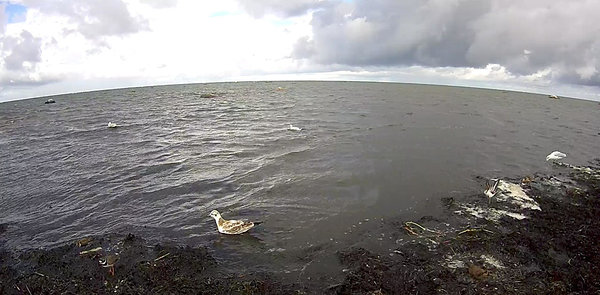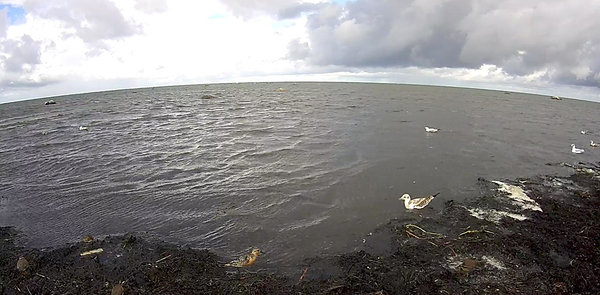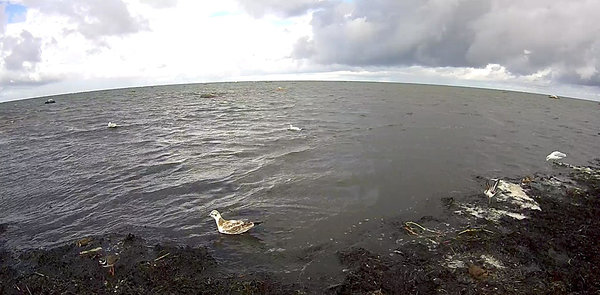Video, camera images and text Tiit Hunt, www.rmk.ee
Translation Liis
Estonian text published 10.08.2017
The strong western winds last weekend caused a rapid rise of the seawater level and by Saturday morning the sea already splashed only a few centimetres from our camera, on Sunday there was already deep choppy sea.
Before moving it the doings of waders could be observed directly at the camera and it was a good opportunity to identify bird species. Determining waders is otherwise a tricky enterprise even for experienced birdwatchers because of their similarity.

Just before evacuating the camera from the rising sea in the wind turning towards storm I managed to record a video snatch.
The larger waders in the beginning of the video with a rusty brown neck and belly are bar-tailed godwits, the ones similar in colour but slightly smaller are redknots. These two species are very easily confused when they are not seen side by side as the video shows. Similarly it is easy to confuse the ringed plover with the little ringed plover, the grey plover with the golden plover etc

In the first 50 seconds of the video cut ringed plovers and for a moment a grey plover can also be seen. Dunlins are constantly in view.

The most numerous among the passing migrant waders is the only Calidris species breeding in


